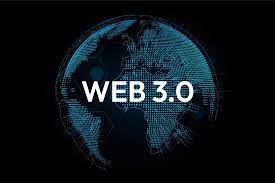While Web3 holds great promise, it also faces several challenges and limitations that need to be addressed for its widespread adoption. Here are some key challenges associated with Web3:
- Scalability: One of the significant challenges for Web3 is scalability. Blockchain networks, especially those using Proof of Work (PoW) consensus, can have limited transaction throughput and high latency. As the number of users and transactions increases, scalability becomes a crucial issue that needs to be addressed to ensure efficient and seamless operations.
- User Experience: Web3 applications often suffer from a complex and unfamiliar user experience compared to their centralized counterparts. Activities like managing private keys, interacting with smart contracts, and navigating decentralized interfaces can be intimidating for non-technical users. Improving the user experience and creating more intuitive interfaces are necessary to drive mainstream adoption.
- Energy Consumption: Some blockchain networks, particularly those using PoW consensus, consume significant amounts of energy. The energy consumption associated with mining and transaction validation has raised concerns about the environmental impact of Web3. Developing more energy-efficient consensus mechanisms or transitioning to alternative consensus algorithms can help mitigate these concerns.
- Regulatory and Legal Challenges: Web3 operates in a regulatory landscape that is still evolving. The decentralized and borderless nature of Web3 applications raises challenges for legal frameworks and compliance. Issues such as data privacy, intellectual property rights, taxation, and anti-money laundering regulations need to be addressed to ensure the adoption and legitimacy of Web3 technologies.
- Interoperability and Standards: Achieving interoperability and establishing common standards across different blockchain networks and protocols is a challenge. Lack of interoperability limits the seamless transfer of value and data between different platforms, hindering the growth and integration of the Web3 ecosystem. Developing interoperability protocols and standards is crucial for the scalability and interconnectedness of Web3 applications.
- Security and Auditing: While blockchain technology provides inherent security, Web3 applications are not immune to vulnerabilities and attacks. Smart contracts can have coding errors or be susceptible to exploits, leading to financial losses. Web3 platforms also face the challenge of auditing decentralized applications and ensuring the security of user funds and data.
- Governance and Upgrades: Decentralized governance is a challenge for Web3 platforms. Making decisions and implementing upgrades require consensus among network participants, which can be a time-consuming and complex process. Effective governance models that consider the interests of all stakeholders while maintaining decentralization are necessary for the sustainable development and evolution of Web3 platforms.
While Web3 holds great promise, there are also several challenges and limitations that need to be addressed. Here are some of the main ones:
- Scalability: One of the biggest challenges facing Web3 is scalability. Blockchain networks, which are a key component of Web3, can struggle to handle a large number of transactions at high speeds. As more users join the network and the number of transactions increases, scalability becomes a critical issue that needs to be addressed for widespread adoption.
- User Experience: Web3 applications can sometimes have a steeper learning curve than their centralized counterparts. Users may need to manage their own wallets, understand how to interact with smart contracts, and deal with potentially unfamiliar interfaces. Improving the user experience and making Web3 applications more intuitive and user-friendly is an ongoing challenge.
- Energy Consumption: Many blockchain networks, especially those using Proof of Work (PoW) consensus mechanisms, consume significant amounts of energy. This energy consumption is not sustainable in the long term and raises concerns about the environmental impact of Web3. It is important to explore more energy-efficient consensus mechanisms and alternative solutions to minimize the carbon footprint of Web3.
- Regulation and Compliance: Web3, with its decentralized nature, can present challenges in terms of regulation and compliance. Traditional legal frameworks may struggle to keep up with the rapid pace of technological advancements in Web3. Finding the right balance between enabling innovation and ensuring compliance with relevant laws and regulations is a complex challenge that needs to be addressed.
- Security and Privacy: While blockchain technology provides enhanced security, Web3 applications are not immune to security breaches and vulnerabilities. Smart contracts, for example, can be susceptible to coding errors or exploits that can be exploited by malicious actors. Ensuring the security and privacy of user data and assets, as well as protecting against cyber threats, is a continuous challenge for Web3.
- Interoperability: Web3 aims to enable interoperability between different applications, platforms, and blockchains. However, achieving seamless interoperability requires establishing common standards and protocols. The lack of interoperability can create fragmentation within the Web3 ecosystem, limiting the full potential of decentralized networks.
- Adoption and Awareness: The adoption and awareness of Web3 technologies can be a challenge, especially for non-technical users. Educating users about the benefits and use cases of Web3, improving accessibility, and creating user-friendly interfaces are crucial for driving mainstream adoption.
It’s important to note that while these challenges and limitations exist, they are not insurmountable. The Web3 community is actively working on addressing these issues through ongoing research, development, and collaboration. As the technology evolves, it is expected that solutions will be found to overcome these challenges, paving the way for a more robust and widely adopted Web3 ecosystem.
SHARE
